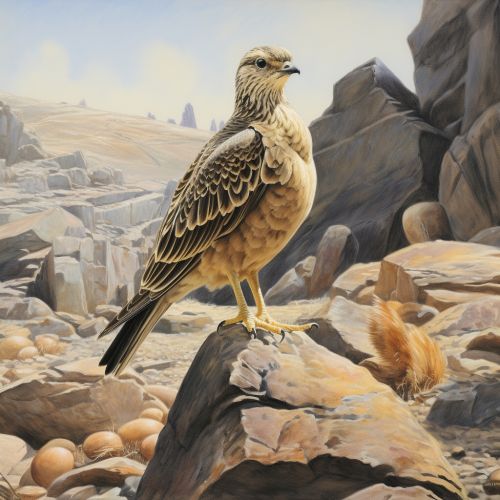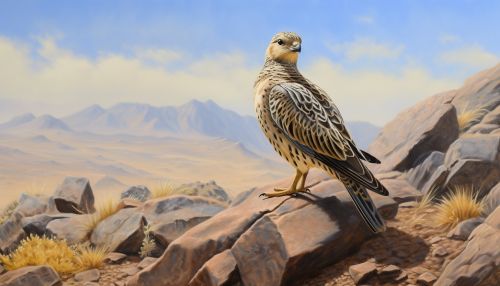Tibetan Sandgrouse
Taxonomy and Description
The Tibetan Sandgrouse (Pterocles tibetanus) is a species of bird in the family Pteroclidae. It is native to the high-altitude regions of the Tibetan Plateau and surrounding areas. This grouse is characterized by its sturdy body, short legs, and long pointed wings and tail. The adult male has a distinctive black belly and a white face with a black border, while the female is more cryptically colored to blend in with the rocky terrain.


Distribution and Habitat
The Tibetan Sandgrouse is found across a wide range of the Tibetan Plateau, extending into the Himalayas, northern India, western China, and northern Nepal. Its preferred habitat is barren, rocky terrain at altitudes between 3,500 and 5,500 meters. It is a specialist of these harsh, cold environments and is rarely found in lower altitudes.
Behavior and Ecology
Tibetan Sandgrouse are primarily terrestrial birds, spending most of their time on the ground. They are known for their remarkable adaptations to their harsh environment, including a specialized diet of seeds and vegetation, and unique physiological adaptations to conserve water and withstand the cold.
Diet
The diet of the Tibetan Sandgrouse consists primarily of seeds, leaves, and shoots of various alpine plants. They have a unique ability to extract water from their food, which allows them to survive in their arid environment where water is scarce.
Reproduction
The Tibetan Sandgrouse breeds from May to September, with both parents involved in incubating the eggs and raising the chicks. The nest is a simple scrape in the ground, often lined with plant material. The female typically lays two to three eggs, which are incubated for about 22-24 days.
Conservation Status
The Tibetan Sandgrouse is currently classified as Least Concern by the IUCN. However, it faces threats from habitat loss due to overgrazing and climate change. Conservation efforts are focused on preserving its high-altitude habitat and monitoring its population trends.
